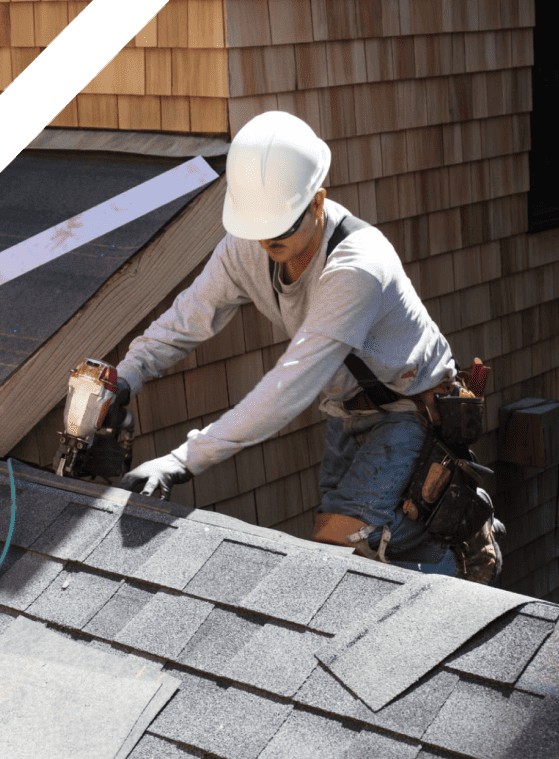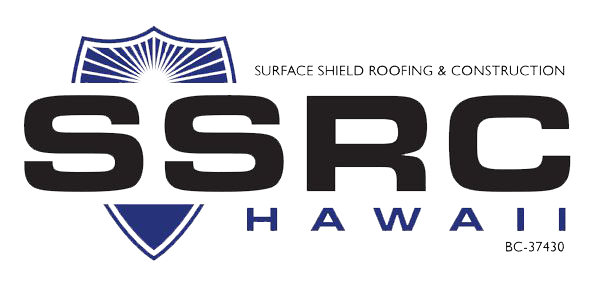Discover Usual Roof Covering Issues and Exactly How to Address Them Properly
When it comes to your roofing, detecting issues early can conserve you time and money. What specific steps should you take to assure your roof stays in top problem?
Recognizing Roofing System Leakages and Their Causes

Following, analyze your roofing from the outside. Seek missing or broken ceramic tiles, rusted flashing, or damaged seamless gutters. Focus on locations around smokeshafts, vents, and skylights, as these are typical leak sources. If you spot any one of these issues, it's important to resolve them without delay.
Throughout heavy rainfall, observe your roof for any kind of pooling water or drips. This can expose leakages that might not show up throughout completely dry conditions. By remaining attentive and frequently inspecting your roof covering, you can capture leaks early and safeguard your home from more damage.
Taking care of Missing or Damaged Roof Shingles
When you notice missing out on or damaged roof shingles, it's vital to act rapidly to stop more problems. You'll desire to identify the degree of the damage, repair any type of missing out on tiles, and think about preventative upkeep tips to keep your roofing system in top shape. Taking these actions can conserve you money and time in the future.
Recognizing Tile Damage
Although tiles are made to withstand the elements, they can still suffer damages over time, leading to prospective leaks and costly repairs. To recognize roof shingles damage, start by examining your roof for missing out on, broken, or curled roof shingles. Consistently checking your roofing system, specifically after extreme weather condition, can help you capture problems early and keep the stability of your home.
Fixing Missing Roof Shingles
After spotting shingle damages, the following step is dealing with any kind of missing out on or damaged shingles promptly to avoid additional issues. If you can, climb up onto your roof covering securely, using ideal gear. Taking action promptly will aid keep your roofing's integrity and expand its life expectancy.
Preventive Upkeep Tips
Just how can you maintain your roofing system in leading shape and stop roof shingles from going missing or obtaining harmed? Examine your roofing system at the very least twice a year and after serious weather (roofing materials hawaii).
Maintain seamless gutters clean and devoid of particles to ensure correct water flow and stop roof shingles damages. Cut overhanging branches to lessen the risk of them scratching against your roofing system during storms.
Consider using a safety sealer to extend your roof shingles' lifespan. Lastly, if you see any problems, address them quickly to prevent pricey repairs later. Taking these safety nets can save you time and cash while assuring your roof remains long lasting and dependable.
Comprehending Roofing Air Flow Issues
Correct roof ventilation is important for preserving the durability and effectiveness of your roof, as it aids regulate temperature level and dampness levels in your attic. Without adequate ventilation, you may deal with problems like excessive heat buildup, leading to premature roof shingles wear and tear, or enhanced humidity that can trigger mold and mildew development and timber rot.
To examine your roof ventilation, check for signs of overheating, such as warped roof shingles or a warm attic. Seek blocked vents, which can limit air flow and trap warm. You should guarantee your consumption and exhaust vents are balanced, allowing for appropriate air exchange.
If you believe air flow problems, consider mounting added vents or upgrading existing ones. Ridge vents, soffit vents, and gable vents can all improve air movement. Attending to these problems without delay can secure your roofing system and conserve you from expensive repair work down the line. Remain proactive in keeping your roofing system's air flow to safeguard your home.
Attending To Roofing Moss and Algae Growth
While you may value the natural look of moss and algae on your roof covering, these microorganisms can result in significant troubles if left untreated. They trap moisture, which can lead to shingle damage and leaks. To tackle this problem, beginning by eliminating any visible development. Use a soft-bristle brush to delicately scrub away the moss and algae, being cautious not to damage your roof shingles.
Next, take into consideration using a specialized roof cleaner or a mix of water and bleach to kill staying spores. Wash extensively to stop any kind of chemical damage. In addition, mount zinc or copper strips along the ridge of your roof. As rainfall washes over these metals, it produces a safety barrier against future growth. Normal examinations and upkeep will assist stop moss and algae from returning, ensuring your roofing system continues to be healthy for years ahead.
Fixing Tornado Damages and Wind Problems
After a storm, it's important to assess your roof covering for damage caused by high winds and hefty rain. Beginning by inspecting for missing or broken tiles, as a fantastic read these are typical casualties.
Seek any drooping locations, which may show water build-up or architectural issues. If you find any kind of particles, like branches or leaves, remove them carefully to prevent further damages. If your gutters are blocked, clear them to guarantee correct drain.

For little fixings, you may handle it on your own, yet do not be reluctant to call a specialist for considerable damages. Remember, acting rapidly can save you from bigger troubles down the line, so take that assessment seriously and attend to any type of concerns asap.
Recognizing Indicators of Structural Damage
How can you tell if your roofing system is experiencing from structural damages? Next off, check for cracks or spaces in the wall surfaces or ceiling, as these can indicate moving or settling due to roofing problems. If you see missing or check out here damaged shingles, it's important to address them swiftly, as they can expose your roofing to further damage.
Regular Maintenance Tips for Durability

Routine Evaluations Significance
Since a roof covering is your home's very first line of defense versus the elements, normal assessments are important for keeping its stability. You ought to inspect your roof at least twice a year, ideally in spring and autumn, to catch possible problems early. Keeping up with these inspections can stop costly repair services down the line and prolong your roofing system's life expectancy, ensuring your home remains safe and sound for years to come.
Correct Rain Gutter Maintenance
Routine roof covering inspections naturally cause the value of proper rain gutter maintenance. Tidy your seamless gutters at least two times a year to avoid clogs from leaves, dirt, and particles. If you live in a tree-heavy area, think about examining them extra commonly. Use a durable ladder and wear gloves while removing the build-up. Check your rain gutters for leaks or rust; they can create water damages to your roofing and home. Make why not try these out sure downspouts straight water away from your foundation to avoid flooding. Installing gutter guards can decrease particles build-up and minimize maintenance time. Check for appropriate incline; seamless gutters must slope toward the downspouts to guarantee ideal drain. By adhering to these pointers, you'll prolong your rain gutters' lifespan and shield your roofing system.
Frequently Asked Inquiries
Exactly How Can I Pick the Right Roof Product for My Home?
To choose the ideal roofing product for your home, think about environment, durability, and aesthetics. Research study choices like asphalt shingles, metal, or tile. Consider maintenance needs and budget to locate what suits you finest.
What Are the Indicators I Need a Roofing Replacement Rather Than Fixing?
If you see extensive leakages, drooping, or missing tiles, you might need a roofing system replacement. If your roofing's nearing its life expectancy or has substantial damage, it's time to contemplate a full substitute instead of simply fixings.
How Commonly Should I Set Up Expert Roofing Evaluations?
You must schedule professional roofing system examinations at the very least yearly, preferably in springtime or fall. This helps catch potential concerns early, guaranteeing your roof remains in good condition and extending its lifespan.
Can I Install a New Roofing System Over My Old One?
You can install a new roof over your old one, but it's important to inspect regional building ordinance and ensure the existing roof covering's problem is audio. This technique can save time and money, however take into consideration possible issues.
What Is the Typical Life Expectancy of Different Roof Materials?
The standard life-span varies by material: asphalt roof shingles last 15-30 years, metal roofs can last 40-70 years, while floor tile or slate roofings may exceed 50 years. Pick sensibly based on your environment and spending plan.
Conclusion
By remaining alert and dealing with usual roofing troubles promptly, you can secure your home and prolong your roof covering's lifespan. With a little regular upkeep, you'll not only protect your investment however likewise enjoy peace of mind understanding your roofing is in leading form.